Resources
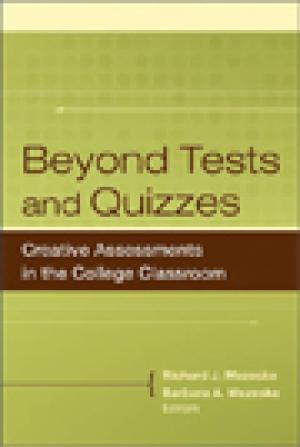
Because the drive toward external assessment speaks almost exclusively in terms of standardized testing, we need to be reminded of the internal purposes of assessment: measuring learning for both student and teacher so that instruction can be adjusted and improved. This book is written for college instructors who are striving to creatively change assessment practice to better reflect learner-centered teaching. It is intended to consider not only the multiple ways in which individuals learn content, but also the multiple avenues to assessment the variety of learning styles demands. Creative assessment is defined here as assessments that spin, twist, and reform what might be a standard kind of assessment in an ordinary classroom. Instructors should use these examples of creative assessment as starting points, and as the beginnings of an internal discussion on what matters most in the courses they teach: What components of each course count the most for solving a range of problems in the discipline? If facts are important, and they usually are, how can they be used to support a flexible approach to thinking, solving, considering options, and gathering and interpreting evidence? What are the facts not telling us? (From the Publisher)
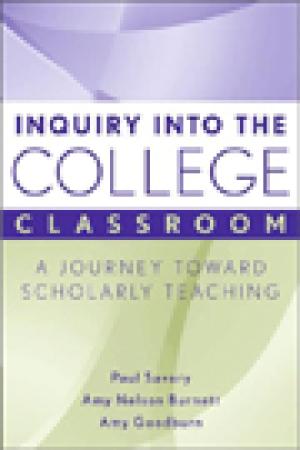
An essential companion for university faculty interested in conducting scholarly inquiry into their classroom teaching, this practical guide presents a formal model for making visible the careful, difficult, and intentional scholarly work entailed in exploring a teaching question. As a how-to guide, this is an invaluable resource for planning and conducting classroom research—formulating questions and hypotheses, defining a data collection methodology, collecting data, measuring the impact, and documenting the results. Inquiry Into the College Classroom is filled with richly illustrative examples that highlight how university faculty from a range of academic disciplines have performed scholarly inquiries into their teaching and leads faculty on a journey that includes: * Developing a formal model for structuring the exploration of a classroom inquiry question * Providing a practical and useful guide for faculty interested in exploring teaching and learning challenges * Detailing faculty experiences in measuring specific changes in student learning or perspectives * Demonstrating how to document classroom inquiry in a form to be shared, used, and reviewed by other faculty * Sharing useful and practical suggestions for getting started with a classroom inquiry * Highlighting different models for disseminating classroom inquiry work * Linking classroom inquiry to larger conversations about the scholarship of teaching and learning (From the Publisher)
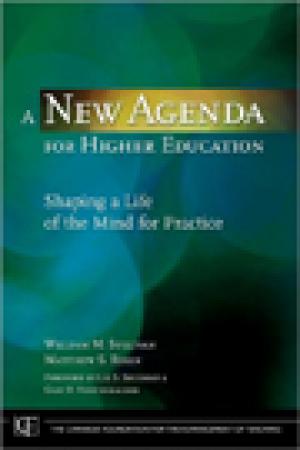
In A New Agenda for Higher Education, the authors endorse higher education's utility for enhancing the practical as well as intellectual dimensions of life by developing a third, different conception of educational purpose. Based on The Carnegie Foundation for the Advancement of Teaching seminar that brought together educators from six professional fields with faculty from the liberal arts and sciences, A New Agenda for Higher Education proposes an educational aim of "practical reason," focusing on the interdependence of liberal education and professional training. The book includes case studies of instructors from a wide array of disciplines including those who educate their students for practical responsibility. The authors document the process by which they learned to collaborate with one another across fields and, in the end, produced a new discourse of practical reason. (From the Publisher)
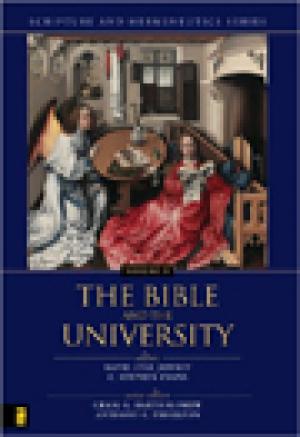
It is well known that the Western university gradually evolved from the monastic stadium via the cathedral schools of the twelfth century to become the remarkably vigorous and interdisciplinary European institutions of higher learning that transformed Christian intellectual culture in the thirteenth and fourteenth centuries. It is equally well known that subsequent disciplinary developments in higher education, including the founding and flourishing of many of the most prestigious of North American universities, owe equally to the Protestant and perhaps particularly Calvinist influence. But that the secularized modern university that descended from these developments is now in something of an identity crisis is becoming widely and often awkwardly apparent. The reason most often given for the crisis is our general failure to produce a morally or spiritually persuasive substitute for the authority that undergirded the intellectual culture of our predecessors. This is frequently also a reason for the discomfort many experience in trying to address the problem, for it requires an acknowledgement, at least, that the secularization hypothesis has proven inadequate as a basis for the sustaining of coherence and general intelligibility in the university curriculum. Nowhere is this more apparent than in the disciplines of biblical studies and theology, which once were the anchor or common point of reference for theological thought, but which are now both marginalized in the curriculum and internally divided as to meaning and purpose, even where the Church itself is concerned. In this final volume of the Scripture and Hermeneutic Series, a group of distinguished scholars havesought to understand the role of the Bible in relation to the disciplines in a fresh way. Offered in a spirit of humility and experimentally, the essays here consider the historic role of the Bible in the university, the status of theological reflection regarding Scripture among the disciplines today, the special role of Scripture in the development of law, the humanities and social sciences, and finally, the way the Bible speaks to issues of academic freedom, intellectual tolerance, and religious liberty. Contributors Include: Dallas Willard William Abraham Al Wolters Scott Hahn Glenn Olsen Robert C. Roberts Byron Johnson Robert Cochran, Jr. David I. Smith John Sullivan Robert Lundin C. Stephen Evans David Lyle Jeffrey (From the Publisher)
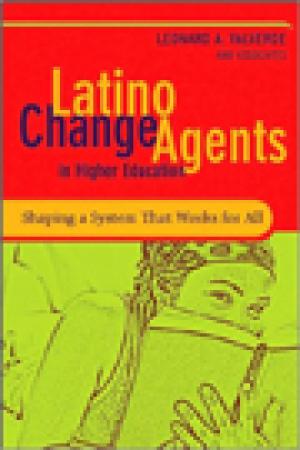
This book offers college and university teachers a practical guide for meeting the challenges of educating the burgeoning population of Latino students. The contributors, a stellar group of experienced leaders in higher education, clearly show that the changes to higher education needed to ensure Latino student success will benefit all students. In this book, the authors call for systemic change across the entire K-16 spectrum but put the focus on the challenges for higher education. The book outlines strategies for increasing access and retention, explores the role of professional associations in advocating change, and explains the importance of the contributions of Latino college graduates to the U.S economy. Latino Change Agents in Higher Education is a much-needed guide for higher education leaders no matter what type of campus or institution they represent. (From the Publisher)
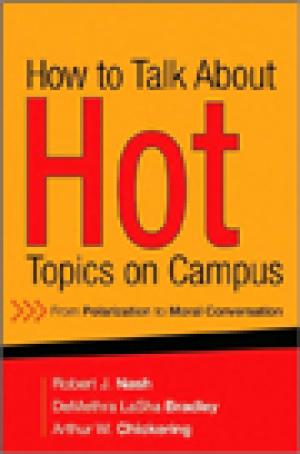
How to Talk About Hot topics on Campus fills a gap in the literature by providing a resource that shows how to construct and carry out difficult conversations from various vantage points in the academy. It offers a theory-to practice model of conversation for the entire college campus that will enable all constituencies to engage in productive and civil dialogue on the most difficult and controversial social, religious political and cultural topics. How to Talk About Hot Topic on Campus covers teaching highly controversial, potentially, provocative, subject matter as well as creating an institutional culture that welcomes and nourishes difficult conversations throughout campus life. The book speaks to faculty student affairs staff, administrators and students in all campus venues. (From the Publisher)
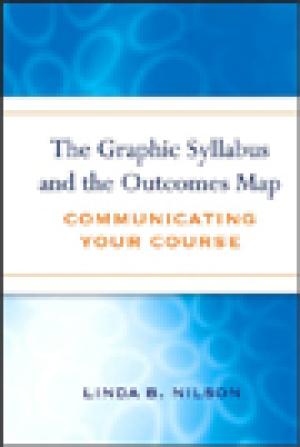
This book shows college instructors how to communicate their course organization to students in a graphic syllabus—a one-page diagram, flowchart, or concept map of the topical organization—and an outcomes map—a one-page flowchart of the sequence of student learning objectives and outcomes from the foundational through the mediating to the ultimate. It also documents the positive impact that graphics have on student learning and cautions readers about common errors in designing graphic syllabi. (From the Publisher)
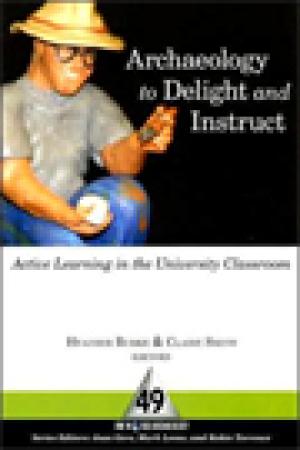
This book presents novel and interesting ways of teaching archaeological concepts and processes to college and university students. Seeking alternatives to the formal lecture format, the various contributions seek better ways of communicating the complexities of human behavior and of engaging students in active learning about the past. This collection of imaginative exercises designed by 20 master instructors on three continents includes role-playing, games, simulations, activities, and performance, all designed to teach archaeological ideas in interesting and engaging ways. Sponsored by the World Archaeological Congress. (From the Publisher)
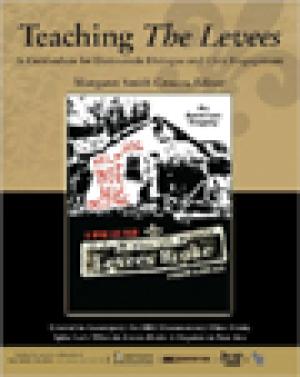
Abstract: One powerful response to the disaster of Hurricane Katrina was the Peabody Award-winning HBO documentary film event, When the Levees Broke: A Requiem in Four Acts, by Spike Lee. Now, through the generosity of the Rockefeller foundaiton, faculty and staff at Teachers College, Columbia University have created this compelling curriculum guide, based on the documentary and for use in high schools, colleges and community groups. In September 2007, through a generous collaboration between The Rockefeller Foundation, Teachers College, and HBO, 30,000 copies of a new curriculum package addressing the issues of citizenship, race, class and poverty raised in the aftermath of Katrina were distributed to school, college and community educators. The package included a copy of Spike Lee and HBO's epic documentary, 'When the Levees Broke: A Requiem in Four Acts,' as well as the highly acclaimed multidisciplinary curriculum guide, Teaching The Levees. Due to the continued immense demand for this resource, the accompanying curriculum guide is now available for purchase. Teaching The Levees, developed by faculty at Teachers College, Columbia University, includes chapters on history, media literacy, civics, economics and geography. (From the Publisher)
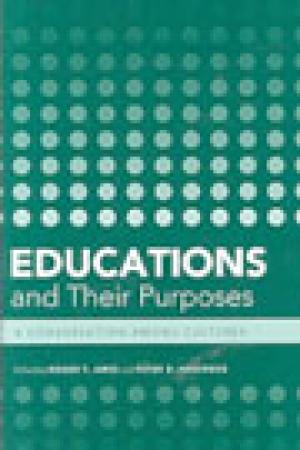
Chapters included in Part One, Education, Relationality, and Diversity, examine the growing intellectual awareness of a pervasive interdependence amid diversity in all aspects of the human experience brought on by the unrelenting processes of globalization. One of the most distinguished voices in the philosophy of emotions offers a sustained reflection in the opening chapter to Part Two, Educating Emotions: The Phenomenology of Feelings. In Part Three, East Asian traditions of thought that have never committed to the familiar mind-body dualism are appealed to as a resource for rethinking the body in education. The tension between personal authenticity and indoctrination in the role that education plays in preparing a person for a successful life is the subject of Part Four, Creativity and Habilitation, followed by chapters on the mutual accommodation of different approaches to education. The final essays discuss the role of aesthetic sensibilities in moral development with the theme of education and the aesthetics of moral cultivation. (From the Publisher)